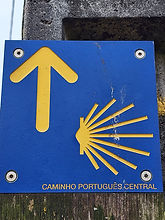Holy Blisters-The Camino Journey from Burgos to Santiago de Compostela






About
Welcome to Holy Blisters, My name is Cynthia Piper and I live in Matamata, Aotearoa New Zealand, with two crazy cats and three geriatric hens.
In April and May 2019, I walked the Portuguese Camino with five ladies, a journey of 667 kilometres. The problem with the Camino is that it gets into your spiritual and physical heart and mind. It keeps calling you back.
In 2023, my granddaughter Jay, then 13 years old, decided to accompany me, and we chose to walk the Portuguese Camino, taking a few different routes on our way to Santiago. You can read about our adventures on our blog page. I had always wanted to do the Via de la Plata from Seville, but in March 2024, I had a heart attack. Now, a year later, with two stents, determination, and a pack load of motivation, I plan to walk from Burgos on the Camino Frances to Santiago de Compostela - 500 kms. The Via de la Plata will have to wait!
This Camino is different - I will walk Vicaire Pro, on behalf of my great niece, Georgia, who took her own life in 2024. The aim is to raise money in memory of Georgia for I AM HOPE, a charitable trust supporting those with mental health issues. I will walk with Glenise who came on our 2019 Camino.
You are welcome to follow my journey as I train, prepare and travel.. Please comment on my posts. It would be wonderful if you could also support the wonderful work of I AM HOPE by making a donation.
Santiago de Compostela and St James
St James was the son of Zebedee and Salome, and brother of John. He was a fisherman, who along with John and Peter was called by Jesus to be one of his disciples. (Mark 5:1-11)
James is thought to have left Jerusalem to preach in the Iberian Peninsula. When he returned to the Holy Land he was killed by Herod Agrippa in CE44.
His body was returned to Spain by boat arriving near Padron and buried on Mt Libredon. Around 813-820, a hermit named Pelayo discovered the tomb after following stars shining down on a field. Pelayo reported his find to King Alfonso II, who ordered a church to be built on top of the tomb.
The reliquary holding the remains of St James
https://www.pinterest.nz/pin/342906959099943710/
The church was rebuilt in 1075 and the Cathedral of Santiago de Compostela, as it is now known, was consecrated in 1211. It is a place of pilgrimage along with Jerusalem and Rome.


